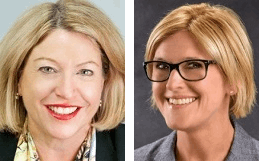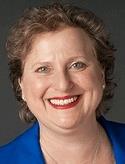How Big Pharma Is Tackling Patient Centricity & Diversity Challenges In Clinical Trials

There’s a lot of talk about patient centricity in the clinical trial arena these days, and for good reason — hearing the voice of patient and incorporating patient perspectives into trial design can pay huge dividends for all stakeholders involved. But what does it mean to be patient centric, practically speaking? What tactics are leading pharma companies employing to make centricity a reality in their trials?
To find out, Clinical Leader reached out to patient centricity experts at four Big Pharma companies:
- Steven Immergut, Head of Communications and Advocacy Relations, Pharmaceuticals, Bayer
- Andrew Benzie, M.D., Head of Patients in Partnership, GSK
- Beverly Harrison, Head of Patient Support, and Katherine Capperella, Global Patient Engagement Leader, Janssen
- Roslyn Schneider, M.D., Global Patient Affairs Lead, Pfizer
In Part 1 of this two-part article, these leaders described their recent patient centricity initiatives, the technologies they’ve employed, and the specific benefits their efforts have yielded for their companies and their patients. In this installment, they discuss programs related to patient diversity and patient recruitment at their firms, and take an industry-wide look at noteworthy innovations in patient centricity.
FDA is making a big push for greater patient diversity in trials. What are some of the things your company is doing to try and get a more diversified patient population into your trials?
 Beverly Harrison and Katherine Capperella, Janssen: Janssen has an internal, cross functional working group in place focused on increasing diversity in clinical trials. One approach being pursued is to develop Janssen ambassadors who can raise awareness and provide access to information regarding clinical trials in the communities we serve. Janssen is also partnering with the Society for Clinical Research Sites (SCRS) to develop an awareness and best practice program for clinical trial sites — this will include tools, webinars, and live seminars to assist clinical research site leaders in best practices for diverse patient engagement in clinical research. In addition, Global Public Health, a department of Janssen that focuses on developing drugs and increasing access to Janssen therapies in non-Western countries, is conducting trials in parts of the world where trials haven’t been routinely conducted, such as sub-Saharan Africa and other developing countries. Janssen is also working to recruit more women into trials and generating real-world evidence to help fill data gaps from Phase 3 studies.
Beverly Harrison and Katherine Capperella, Janssen: Janssen has an internal, cross functional working group in place focused on increasing diversity in clinical trials. One approach being pursued is to develop Janssen ambassadors who can raise awareness and provide access to information regarding clinical trials in the communities we serve. Janssen is also partnering with the Society for Clinical Research Sites (SCRS) to develop an awareness and best practice program for clinical trial sites — this will include tools, webinars, and live seminars to assist clinical research site leaders in best practices for diverse patient engagement in clinical research. In addition, Global Public Health, a department of Janssen that focuses on developing drugs and increasing access to Janssen therapies in non-Western countries, is conducting trials in parts of the world where trials haven’t been routinely conducted, such as sub-Saharan Africa and other developing countries. Janssen is also working to recruit more women into trials and generating real-world evidence to help fill data gaps from Phase 3 studies.
 Roslyn Schneider, Pfizer: We look at diversity in our studies from a scientific perspective. Only if the participants adequately represent the demographics of a disease can we ascertain if our results are relevant to the people of specific genders, ages, races, and ethnic backgrounds who may eventually use the studied intervention. We are creating relationships with a range of organizations and using technology to try to improve access to and reduce the burden for people participating in clinical trials, in order to reach communities that have been long under-represented in clinical trial populations.
Roslyn Schneider, Pfizer: We look at diversity in our studies from a scientific perspective. Only if the participants adequately represent the demographics of a disease can we ascertain if our results are relevant to the people of specific genders, ages, races, and ethnic backgrounds who may eventually use the studied intervention. We are creating relationships with a range of organizations and using technology to try to improve access to and reduce the burden for people participating in clinical trials, in order to reach communities that have been long under-represented in clinical trial populations.
We’re also working as partners with patient organizations to both learn more about what motivates people to volunteer for clinical trials — and what blocks them from volunteering. This includes practices borrowed from our consumer healthcare brethren, such as deploying anthropologists to live nearly 24/7 with patients and get the deep insights that may improve success in more diverse populations. Additionally, we are providing training and resources for clinical research sites and investigators in these communities.
 Steven Immergut, Bayer: So much of it is about education about clinical trials. For example, in the area of diabetic kidney disease, we are emphasizing the recruitment of African American patients, given the disproportionate impact this disease has on the African American population. Together with clinical study principal investigators, we’re working with organizations like the Association of Black Cardiologists and the National Kidney Foundation, to help raise awareness of diabetic kidney disease. These efforts include outreach to public affairs and minority-focused news media. We’re also looking to partner with groups like the American College of Cardiology and the National Minority Quality Forum to explore highly targeted information channels.
Steven Immergut, Bayer: So much of it is about education about clinical trials. For example, in the area of diabetic kidney disease, we are emphasizing the recruitment of African American patients, given the disproportionate impact this disease has on the African American population. Together with clinical study principal investigators, we’re working with organizations like the Association of Black Cardiologists and the National Kidney Foundation, to help raise awareness of diabetic kidney disease. These efforts include outreach to public affairs and minority-focused news media. We’re also looking to partner with groups like the American College of Cardiology and the National Minority Quality Forum to explore highly targeted information channels.
In oncology, Bayer, along with several other companies, supports the Prostate Health Education Network (PHEN) Clinical Trials Rally — an initiative to increase African American participation in clinical trials. The goal is to increase the visibility and understanding of the purpose of prostate cancer clinical trials, and of the importance for African American men to participate in these trials. And in the Chinese community, we are working with New Tang Dynasty (NTD) Television on clinical trial education and engagement in the local community of a couple of key markets.
 Andrew Benzie, GSK: The strategy we are executing to create a more diverse patient population is anchored in three core pillars:
Andrew Benzie, GSK: The strategy we are executing to create a more diverse patient population is anchored in three core pillars:
- Data quality: Improving capabilities and coordinated standards to gather and report information necessary to understand the disease, as well as generate more useful patient insights and identify product-specific information.
- Patient engagement and insights: Adapting our recruitment and engagement processes to the needs of the different patient populations we serve. Building trust with patient advocacy groups, investigator networks, regulatory agencies, and industry partners to increase participation and retention of diverse patients in our clinical studies.
- Culture and transparency: Educating our staff to achieve diversity culture competency and cultivating partnerships to provide a greater understanding of the benefits of clinical trial diversity.
There is a lot we need to do and GSK is fully committed to address the diversity gap in clinical trials.
Patient recruitment is still an issue for most companies running trials. Is there anything your company is doing to try and better engage sites and investigators?
Schneider: We are approaching recruitment holistically in our engagement with sites, investigators, CROs, and the patient community. We’ve enhanced our Find A Trial website, and we solicit feedback on feasibility from investigators, non-investigator healthcare professionals, and members of the patient community that may allow for more predictable timelines and recruitment. We are involving stakeholders earlier in protocol development and using simulations to optimize study design.
In the drive to reduce the burden on investigators, Pfizer is a member of the TransCelerate consortium, which has developed mutually recognized good clinical practice (GCP) training and the Shared Investigator Platform. This platform enables investigators to post their credentials, facilitate some of their processes, and interact with participating sponsors. We are also working with TransCelerate on the Clinical Research Awareness and Access Workstream, which includes engagement of sites and investigators beyond recruitment.
Immergut: Across our therapeutic areas, we are actively working with investigators and their teams at trial sites throughout the U.S. to help with patient recruitment. As one example, our medical science liaisons are working hands-on with minority physicians in local communities to communicate enrollment opportunities in our FIGERO and FIDELIO-DKD clinical studies.
Benzie: For the last few years, we have been actively pursuing mHealth technology to find meaningful ways to engage with patients and expand access to clinical trials. One recent example is our Salford Lung Study, which took a novel approach to working with local health providers by using electronic health records to monitor patients on the study in real-time, with minimal interruption to the patients’ daily lives.
Harrison and Capperella: Janssen is focused on incorporating patient insights into clinical trial protocols prior to the start of the pivotal trial for each of the compounds being measured on the Janssen Patient Engagement Dashboard. Modifying trial protocols to improve patient understanding and experience can improve recruitment and retention, potentially bringing better therapies to patients more quickly. Janssen is currently pursuing this through a “service model,” whereby associates with experience generating insights work together with R&D partners and devise a “patient voice” plan tailored to each dashboard compound.
The patient voice plan approach followed the success of several pilots, including a clinical trial simulation workshop pioneered by Janssen, where patients and investigators were invited to simulate trial visits in a real-life setting. Based on one such simulation, the clinical trial was modified to improve the patient experience. Modifications included shortening visits and providing transportation and additional assistance at the site. After approximately one year, no patients have dropped out of the study, and Janssen was a 2017 CARE award recipient for best patient centric clinical trial.
Can you share a really innovative patient centricity idea that you have heard recently, perhaps from a colleague, network connection, or at a conference?
Immergut: One idea that is really exciting is using self-driving cars to help patients get to their healthcare provider or clinical trial site. Especially when you think about the rapidly aging population, self-driving cars could have a tremendous impact on helping seniors (or really any patient) who need assistance. As Joseph Coughlin, director of MIT’s AgeLab, said in a recent article: “For the first time in history, older people will be the lifestyle leaders of a new technology. Younger people may have had smartphones in their hands first, but it’s the 50-plus consumers who will be first with smart cars.” Applying advances in technology to remove barriers and meet the healthcare needs of our evolving population is what it’s all about.
Benzie: At GSK, we have recognized that embedding the patient experience throughout the entire lifecycle of the product — not just the R&D process — holds promise for timely and sustainable access to transformational medicines. We are sharing and pressure testing our insights and approaches with industry leaders in areas where patient engagement is especially important and the unmet need is high, such as rare diseases. Our rare diseases unit often operates in unchartered territory, where little or nothing has been published regarding the natural history of the diseases for which we are developing medicines, and where few or no treatment options exist. We recently presented our approaches at the 2017 World Orphan Drug Congress in Washington, DC. We have an opportunity, as an industry, to collectively share our experiences to gain new insights into unique aspects related to rare disease drug development — knowledge we can use to help other groups of patients in the future.
Harrison and Capperella: Janssen recently held its third annual HealtheVoices Conference, bringing together and empowering over 100 online health advocates from 35 different health communities around the world. The agenda and learning sessions were co-developed by online advocates, and workshops were focused on providing tools and resources relevant to online health advocacy. On the last day of the conference, Janssen announced the HealtheVoices Impact Fund, a new grant — developed in response to direct advocate feedback — to support online health advocates in the creation of innovative patient-to-patient support programs, resources, and education. Established at the Community Foundation of New Jersey (CFNJ), the fund will award projects that align with the Janssen charitable giving mission to advance healing for patients.
We also admire the Universal Patient Language (UPL) pioneered by BMS. Making UPL available as an open-source resource helps accelerate the emerging field of patient engagement.
Schneider: I agree. To me, what is really innovative is radical collaboration across all stakeholder groups, partners, and competitors toward our shared goals of improving health and the efficiency and effectiveness of developing therapies. There is a great deal we must each do as individual health sectors and organizations to make patient centricity much more than a concept, but genuine partnership can be a “force multiplier.” Through appropriate sharing of experiences, collective expertise, and resources, we can move faster to where patients want us to be.
